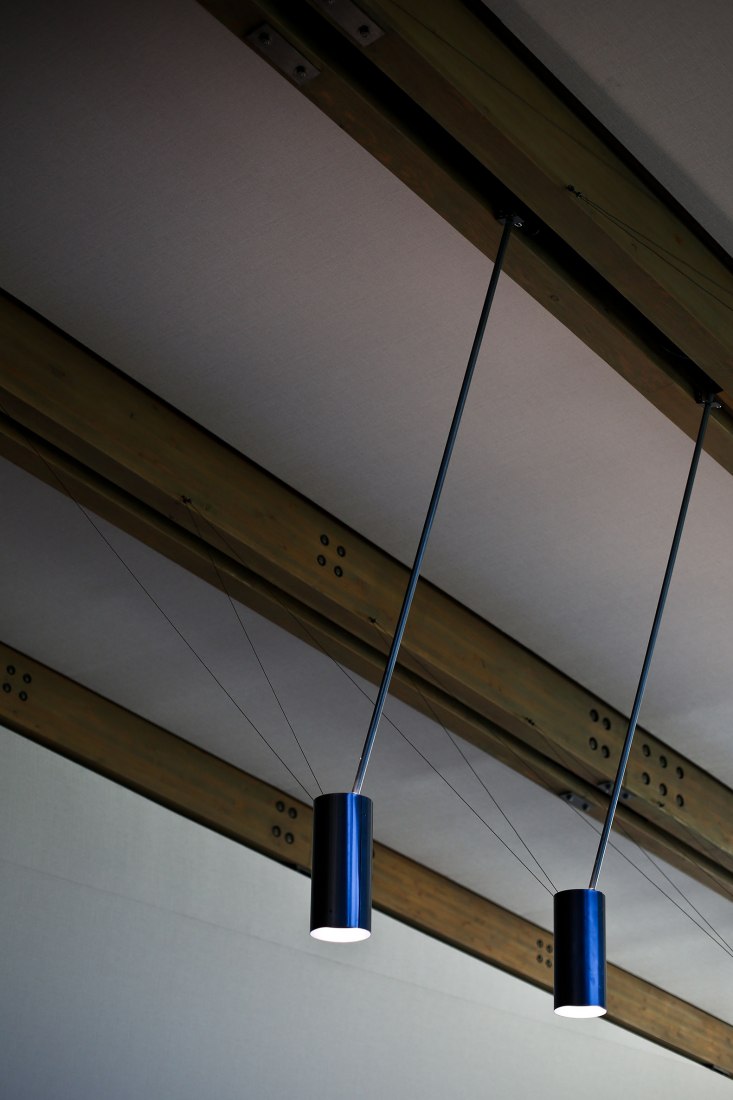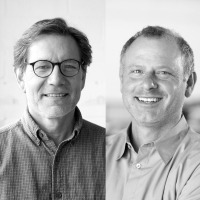The visitor, as he crosses the courtyard via a boardwalk, encounters a fully glazed façade, punctuated by a series of wooden columns that cross the building at regular intervals, while the boardwalk is aligned with the building's entrance via a wooden walkway inserted into the glazed façade.
The headquarters recalls its agricultural roots by bringing the glulam structural pillars outside and making its construction clear, allowing the interior volume to be column-free. On the other hand, the interior, topped with exposed lattice girders, reaches 6 meter at its highest point, thus leaving a great sense of spaciousness. In this way, the repetition of the structure facilitated its manufacture and assembly, saving costs and resources.
Description of project by Graham Baba Architects
Surrounded by the world’s most high-tech fruit packing warehouses, the 16,500-square-foot Washington Fruit & Produce Co. headquarters is conceived as an oasis amidst a sea of concrete and low-lying brush landscape. Tucked behind landforms and site walls, this courtyard-focused office complex provides a refuge from the noise and activity of the industrial processing yards nearby.
Taking its design cue from an aging barn that the client had identified as a favorite, the concept seeks to capture the essence of an utilitarian agricultural aesthetic. A simple exposed structure that employs a limited material palette and natural patina, the design merges rural vernacular with an equally spare contemporary aesthetic.
The L-shaped building is nested into the landscape through the use of board-formed concrete site walls and earthen berms that wrap the perimeter to form a central, landscaped courtyard. Soil excavated for foundation work was repurposed for the perimeter berms, eliminating the need to remove it or add more.
A notch through the berm provides access from the parking area to the formal courtyard and building entrance. Crossing the courtyard via a boardwalk, the visitor is embraced by a fully-glazed facade, punctuated by a series of wood columns that march across the building in regular intervals. The boardwalk aligns with an off-set building entry, which is formed as a wood-wrapped passageway inserted into the glazed facade.
The building recalls its agricultural roots by pulling the 18-foot-tall scissored glu-lam structural columns to the outside, revealing the physics of its construction and enabling the 175-foot-long interior volume to be column free. Topped with 68-foot-long exposed truss girders, the interior reaches 20-feet at its peak. The repetitive nature of the structure ensured easy fabrication and assembly, saving costs and resources. The north-facing courtyard facade is glazed along its length, visually extending the interior space into the courtyard. Interior light is balanced via a long clerestory dormer on the south, while the extensive use of large, south-facing overhangs and high efficiency glazing limits summer heat gain. Reclaimed barn wood siding and a weathering steel roof round out the exterior materials.
Spartan, daylight-filled interiors are complemented by a warm, simple palette of natural materials. Private offices line the south wall, while conference spaces and back-of-house functions are set in wood-clad boxes. Interior furnishings terminate well below the ceiling. The open feeling of the structure is reinforced by keeping furnishings low and allowing them to float within the space. Lighting consists of custom-designed uplights, which keep the ceiling plane tidy. A raised flooring system further ensures that the clean aesthetic is preserved and free of cabling. The deep agricultural roots of both the company and location underlie the simple design concept and attention to detail throughout the project.
The sales office is located in the short arm of the L to isolate noise and enhance privacy. Adjacent to the sales office is a separately-enclosed structure featuring a 30-foot-long table where farmers with whom the company works gather for communal meals. The exposed structural system connecting the lunch room to the main building creates a small, partially covered courtyard, nodding to a remnant of an aging barn.
Views throughout the thirty-acre complex are controlled, whether to the courtyard, the distant hills, or to the shallow private office views created between the building and the berms. Everything is curated to create a peaceful environment in which to work.


















































































